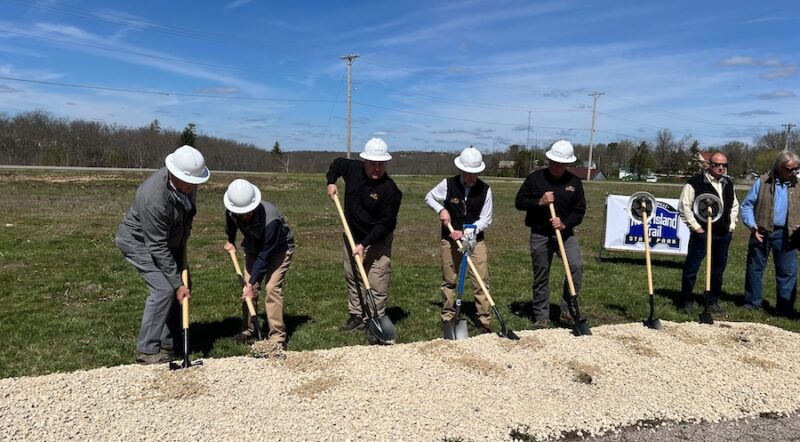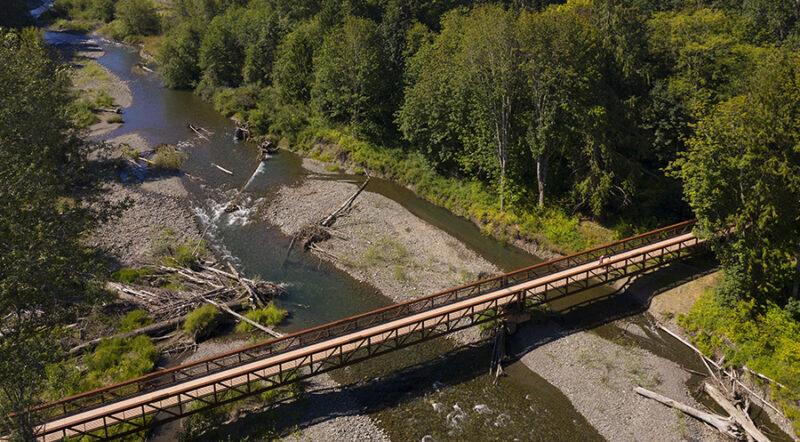From Toxic Site to Thriving Rail-Trail: Montana’s Silver Bow Creek Greenway
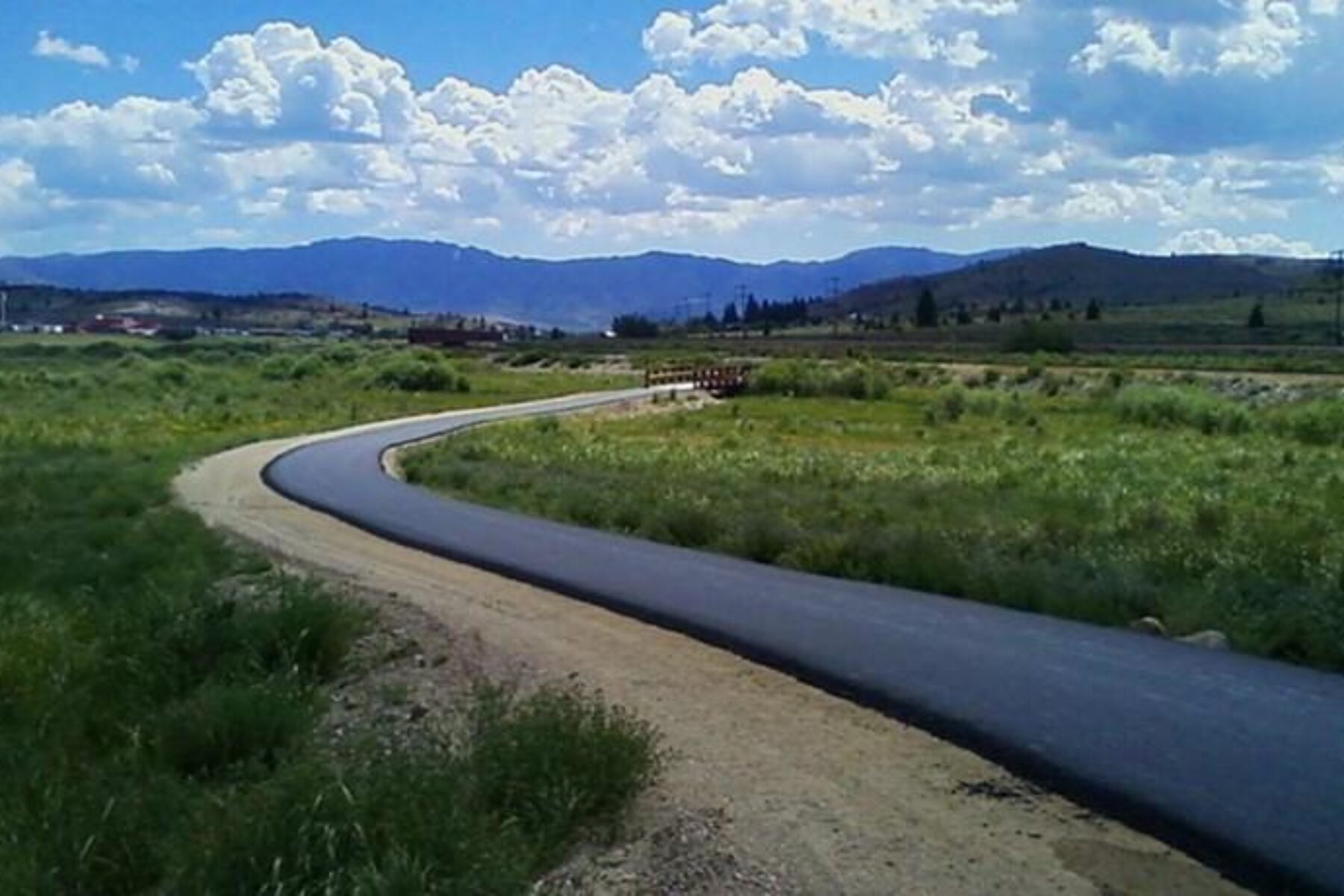
By the early 20th century, Butte, Montana, was already being called the richest hill on Earth, an acknowledgement of the nearly inconceivable amounts of ore being mined there. In 1910 alone, 284 million pounds of copper ore were extracted from the Butte area.
“Butte electrified America,” said Dori Skrukrud, the community development coordinator for the City-County of Butte-Silver Bow. “Butte provided the metals to win world wars. But it paid a significant price.”
Price of Progress
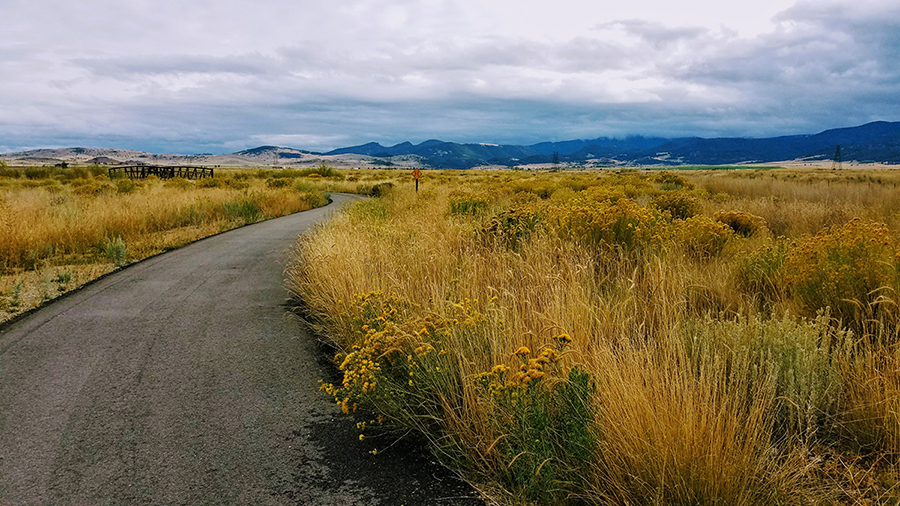
Nothing may better illustrate that price than the Silver Bow Creek that originates in Butte. For more than a century, the creek was a free-for-all dumping site for mining and smelting operations across the region. Choked with a hundred years of toxic heavy metals, the creek was an ecological nightmare. “Full of arsenic, lead, cadmium, zinc, mercury and more, there was no ecosystem at all along the stream,” said Skrukrud. “There were no plants. No birds, not even bugs. It was a dead corridor.” Hardly an auspicious beginning to the transformed and now-beloved Silver Bow Creek Greenway.
Amazingly, that dead corridor extended far beyond the banks of the stream: A massive flood in 1908 washed out the Silver Bow Creek, spreading the witch’s brew of toxins far and wide. To this day, the effects of mine tailings—the unwanted slurry remaining once the valuable components of an ore have been processed—are still clearly visible miles from the creek as bare patches of dirt where little grows.
Jon Sesso was the planning director for Butte-Silver Bow for more than 20 years and well knows the sorry state Silver Bow Creek was once in. “You just stopped looking at, it was so bad. It was easier to pretend it wasn’t there,” he said, noting that it wasn’t all that long ago that raw sewage from a nearby town was discharged directly into the waterway—and no one much minded. “The nutrients they were putting in the stream were the only thing keeping it even somewhat alive.”
Reclaiming a Creek
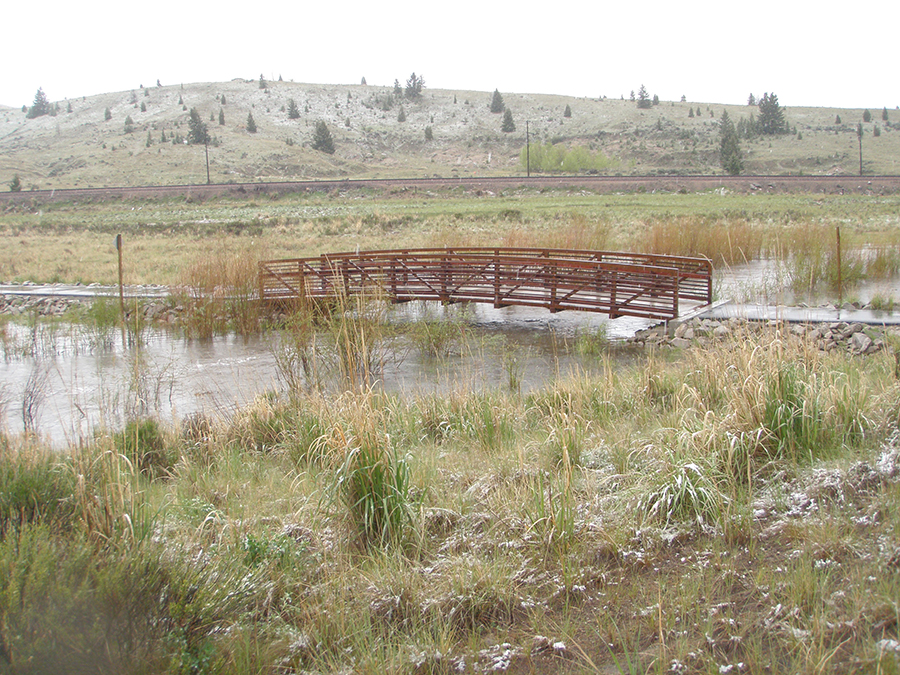
When the area received Superfund designation from the Environmental Protection Agency and given national priority for remediation in 1983, the hard work of undoing the devastation began. Over the next three decades, some 6 million cubic yards of mine tailings were removed. With the source of pollution remediated, it was time to rebuild a functional ecosystem, mile by painstaking mile. First came organic matter added to the riverbanks to provide nutrients for the sedges, reeds and willows that followed. Over time came the introduction of invertebrates, insects, worms and, eventually, fish in the creek.
“It’s the largest stream restoration project that’s ever been attempted,” said Skrukrud. “I’m so pleased to be able to contribute to that.” And Silver Bow Creek today? “People can see deer and foxes, muskrats, beavers, bald eagles and herons. We’re seeing an amazing recovery.”
It was early in the cleanup efforts that city leaders started looking at additional restoration efforts (a step beyond remediation in the EPA playbook) for the creek. “We thought the highest and best use of the corridor would be a pedestrian greenway,” explained Sesso, who today wears dual hats as a state senator and Superfund coordinator for Butte-Silver Bow. “It’s one thing to clean [the river] up—but another thing altogether to keep it clean. We agreed a trail would incentivize our citizens to take care of it.”
Related: Developing Trail in Lincoln Celebrates Nebraska’s Tallgrass Prairie Legacy
New Community Asset
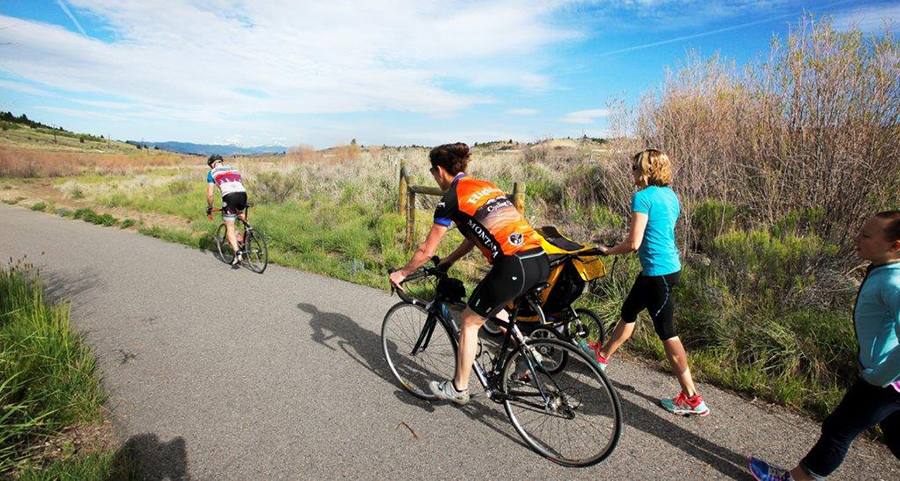
As the director of parks and recreation for Butte-Silver Bow—the department responsible for the trail’s maintenance—J.P. Gallagher is involved with the day-to-day status of the trail. As a member of the Silver Bow Creek Greenway Authority Board, he thinks often about the trail’s future. While the eventual plan is 26 unbroken miles of trail alongside the meandering Silver Bow Creek, the project is far from complete. “It’s an ongoing process to secure rights-of-way from active railroads and landowners,” said Gallagher. “But in the meantime, we’re getting to a fully restored area. We can start boasting about the great recreational opportunities we have to offer rather than being the largest Superfund site in the nation.”
“We see trails as being such an asset,” said Skrukrud, noting that, “seniors use the trail for rehab, and moms and dads use it to teach their kids to ride bikes.” Gallagher says the board’s goal is to encourage this diversity of use by ensuring the greenway is well interconnected with other trail systems in the area and compliant with the Americans with Disabilities Act. “It’s been a 23-year project so far,” said Gallagher. “We don’t have a true date for crossing the finishing line, but we’re hoping to get pretty close to completion in another five years.”
Connections for a Healthy Future
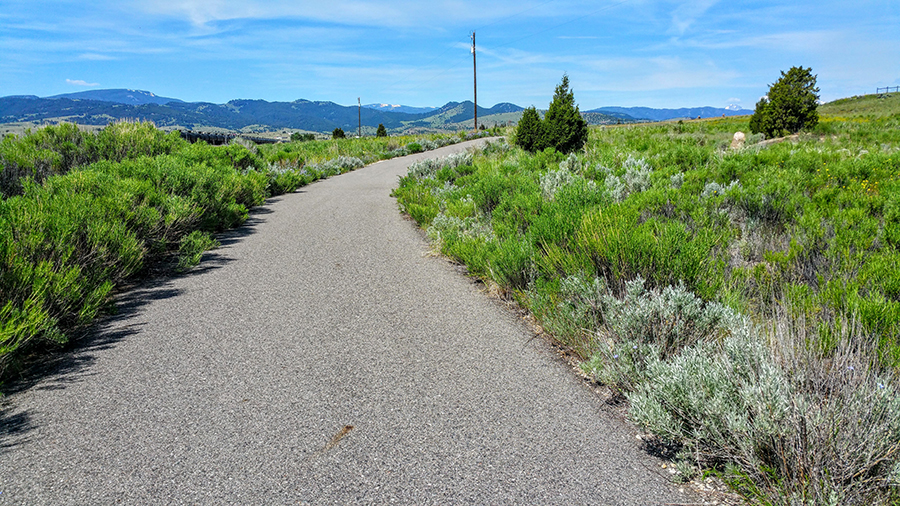
While most of the route’s 26 miles will be paved, local input was taken into account to line some sections with finely crushed stone to better fit with the character of the trail. As it stands now, 8 miles of the Silver Bow Creek Greenway have been paved; the largest missing piece, and one the greenway’s board is actively working to complete, is another 8.5 miles.
That gap, through scenic Durant Canyon, promises to be the highlight of the finished trail. Portions of the trail here will follow the course of the defunct Chicago, Milwaukee, St. Paul & Pacific rail line (the famed Milwaukee Road) through the canyon. Trail organizers are creating a rail-with-trail running between active rail lines operated by BNSF and the short-line Butte, Anaconda and Pacific Railway.
Questions regarding how the pathway will share the rail corridor still need to be answered, though. “We have to have agreements with all the rail lines that go through there,” explained Gallagher. “When you have active railroads [sharing space with the trail], there are a lot of questions: ‘What kind of trail can we build? How close can it be?’”
But riding westward from Butte along a completed segment of the trail next to the now-sparkling waters of Silver Bow Creek, it can be easy to imagine those questions will be answered and the trail completed. After all, what’s a few miles of trail compared to the rebirth of a creek that once killed all that it touched?
Not all traces of the region’s past choices have been obliterated, though, explained Skrukrud. “There’s a little piece in Deer Lodge County that we left unimproved,” she said. “We didn’t want people to forget.”
Trail under construction: Silver Bow Creek Greenway
Location: Silver Bow and Deer Lodge Counties
Used Railroad Corridor: Chicago, Milwaukee, St. Paul & Pacific (abandoned); BNSF; and Butte, Anaconda and Pacific Railway
Length: 26 miles
Surface: Asphalt and finely crushed stone
This story is an extension of the Emerging Rail-Trails story that will appear in the Spring/Summer 2019 issue of Rails to Trails magazine, published in May.

Donate
Everyone deserves access to safe ways to walk, bike, and be active outdoors.

